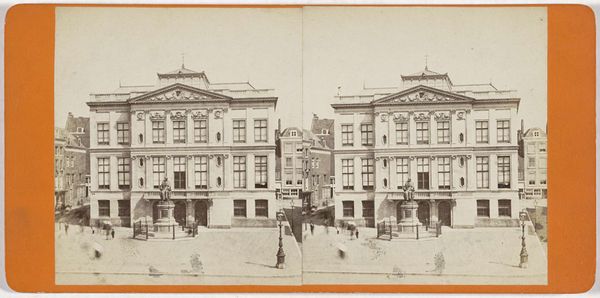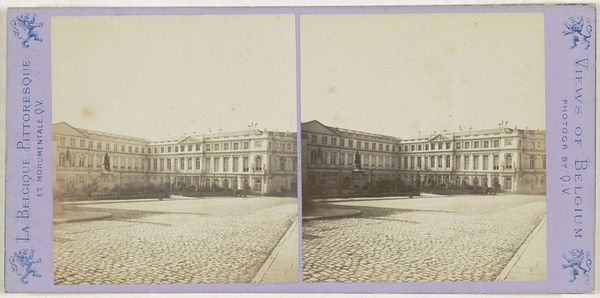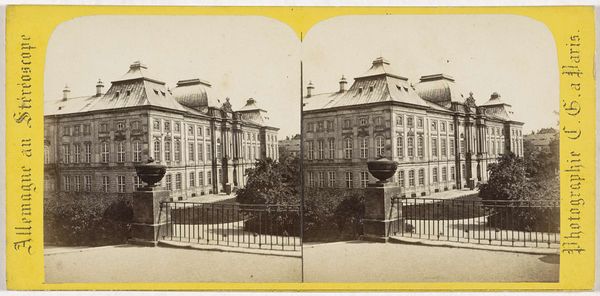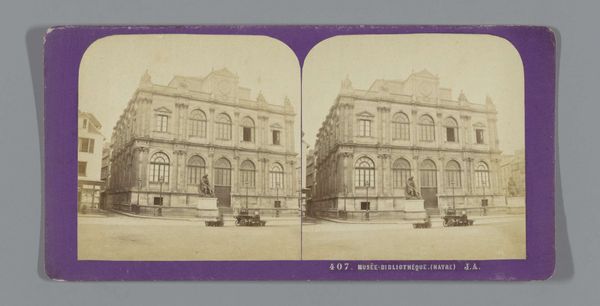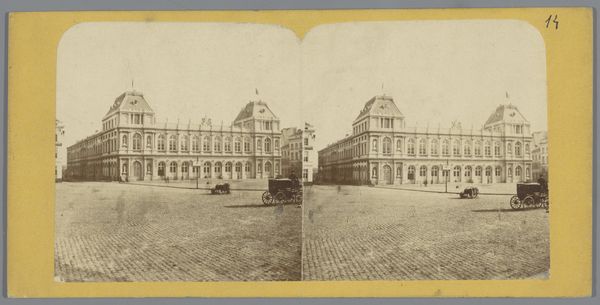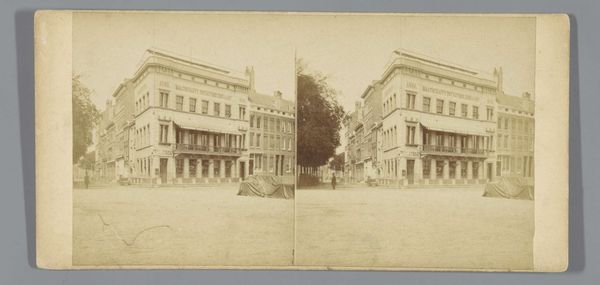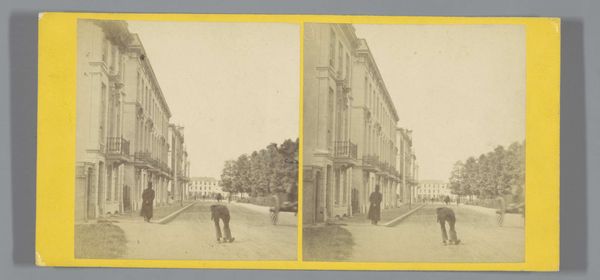
Dimensions: height 86 mm, width 177 mm
Copyright: Rijks Museum: Open Domain
Curator: It looks like a stage set! All elegant facade and perfectly round trees. Is this some kind of early photograph, caught in the amber of nostalgia? Editor: Indeed. What we’re looking at is an albumen print by Hippolyte Jouvin, titled "Kurhaus in Bad Homburg, Duitsland." The photo, part of a stereoscopic card dating from about 1860 to 1865, captures the Kurhaus in Bad Homburg, Germany. Curator: Stereoscopic, that's right, so originally made to pop out at you, a double vision of a perfect leisure scene. There’s something wonderfully contrived, and slightly unnerving about that tidiness. Those pompom trees like orderly green clouds. It speaks to an intense desire for control over nature, doesn’t it? A real Romantic yearning. Editor: Precisely. And it speaks to the social role of these spaces. The Kurhaus, meaning 'cure house,' was the heart of the spa town, a place for entertainment, socializing, and, of course, gambling. These destinations promoted well-being while fostering social stratification. Photography played a key role in constructing the image of the leisure class, selling the idyllic scenes and experiences of health resorts. Curator: So this perfectly still moment, frozen by Jouvin, is in a way an advertisement, showing the upper classes how to "correctly" enjoy leisure. It makes me wonder, did anyone actually experience it this serenely, without any screaming kids or spilled drinks? I’m thinking it was a carefully orchestrated display. Editor: It's a carefully curated moment designed for circulation and consumption, but don't let its constructed nature distract from the artistry, from the perspective, to the framing that provides us access to a specific social view. It certainly wasn’t an unmediated or wholly objective portrayal, but these meticulously captured landscapes reveal the ideals and ambitions projected onto public spaces. Curator: I'll give it that, its beauty lies in its artifice, which it showcases unapologetically. It doesn't pretend to be natural; it celebrates curated perfection. Editor: I see it more as an artifact documenting the dawn of mass tourism, even then marketing certain fantasies of the "good life" – literally for those who could afford it. So, it’s quite an evocative piece offering more than just a snapshot of a building. Curator: It’s food for thought and a lovely picture to look at to make yourself think of our changing understanding of leisure and social position. Editor: And perhaps next time you see such idyllic spaces you can ask yourselves if those constructed image of the Kurhaus remain valid or have finally been replaced with an ever present camera to reveal life more like a real theater.
Comments
No comments
Be the first to comment and join the conversation on the ultimate creative platform.
